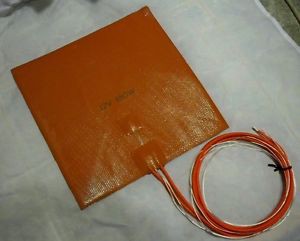I've found that I sometimes need to print very long objects in my 3D printer. The usual way of printing objects that are big in one dimension is to use a delta printer; there's pretty much infinitely extendable in the z direction. This is not the ideal solution for a lot of prints, and I'd rather have a printer that's very long in the X or Y axis.
Therefore, I need to design a printer that is 30 cm in the x axis, 100 cm in the y axis, and about 20 or 30 cm in the z axis. That's 60 liters of volume.
You can just buy a milling or carving machine that's a meter long. There are also 3D printers that have a square meter build footprint. I'm not concerned at all about extending a printer axis to a meter long.
By far the hardest part of this build will be the heated bed. I'm of the opinion that you need a heated bed for a 3D printer, and with a bed this big, it will be a challenge. The rule of thumb for a heated bed is 0.6 W/cm² if you're printing with ABS, and my print bed is 3000 cm². This means I need an 1800 Watt heat bed at the bare minimum. That amount of power means a crappy heat bed, and ideally I would have 1.0 W/cm². That's 3 kilowatts.
I'm trying to build this thing for less than $2500, which means a DC powersupply for the heated bed will take me over budget. I'll need to do an AC heated bed with an SSR. This is well-tread territory in the Reprap world.
That amount of power means a 25A circuit with 120V. This means I won't be using it at home. I'll be using the 220 mains at the hackaspace. There it will only be 13-14 A.
Therefore, I need to find a silicone heated bed, 30cm by 100cm, rated for 220V. Like this, but a lot bigger:
 Benchoff
Benchoff
Discussions
Become a Hackaday.io Member
Create an account to leave a comment. Already have an account? Log In.
yow. i'd insulate the top with kapton, and then lay down a bunch of separate zones of resistance wire, and then cover it with the glass. i'd be astounded if one big heater wouldn't result in a lot of hot/cold spots over something that large.
Are you sure? yes | no
i'd also insulate the bottom side of the aluminum, to reduce losses. fireboard, maybe.
Are you sure? yes | no
This makes a very smooth table surface that is quite flat. Prints stick to it too well, so make sure you coat the surface with glue stick diluted with water so you will be able to remove the print. If you make the table removable, delicate prints can be removed by soaking in water to dissolve the glue stick layer.
Are you sure? yes | no
I extended the x axis on my Printerbot Simple from 4 inches to 11 inches. I found that plexiglass...
Are you sure? yes | no
I am assuming that your bed will be stationary. If not, perhaps an aluminum-framed carbon fiber bed may be a light alternative to solid aluminum. With my printrbot mod I used solid aluminum and the 500mm x 200mm bed weighs about 2kg with rails and all; a lot to throw around (the stock motors can do it, just slower and they certainly don't like it!). Not sure how well CF works with heat...
Are you sure? yes | no
The bed only moves in the Z. I'm doubling up the z motors, so I'm not too worried.
Are you sure? yes | no
Just wondering if you found a source for your silicon heater? While shopping for a 300mm dia heater I have seen a few places on aliexpress that will build heatbeds to order by dimension and power rating.
Are you sure? yes | no
That's pretty much my plan - aliexpress. From what I've seen, the heater will run about $200. It'll go on a $200 piece of aluminum, and I'm going to do glass and PEI sheet. It's easily a $6-700 bed.
Are you sure? yes | no
Wow, that cost is certainly adding up. I spent about $120usd all up for the heatbed and glass.
Some suppliers will provide the heaters with double sided tape and others don't, something to watch out for.
Leveling the bed could get interesting over such a large piece. I guess you'd be running a rather thick sheet of aluminium?
Are you sure? yes | no